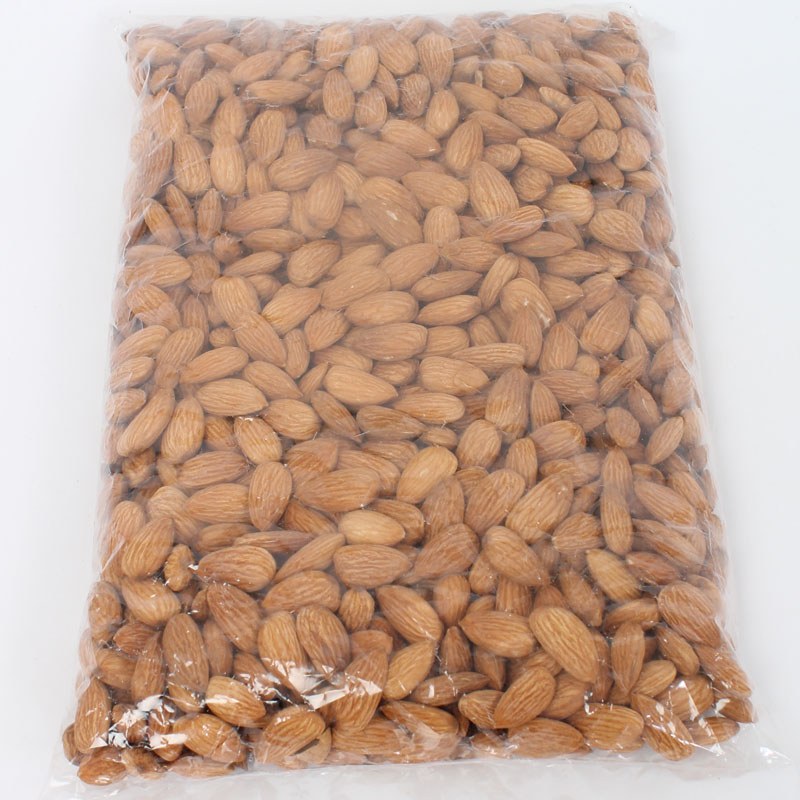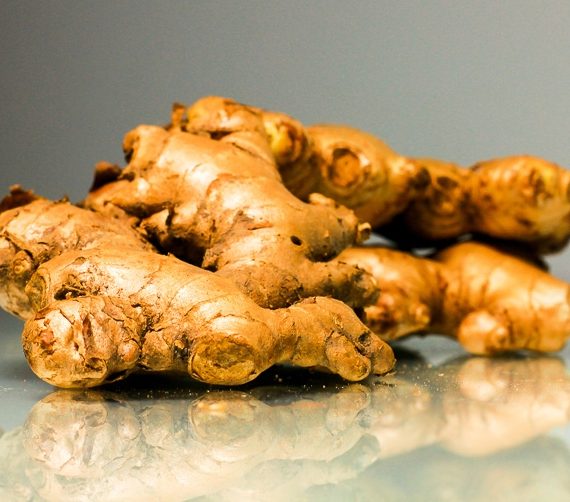Description
Health Benefits
Lower LDL-Cholesterol and Reduce Your Risk of Heart Disease
A high-fat food that’s good for your health? That’s not an oxymoron, its almonds. Almonds are high in monounsaturated fats, the same type of health-promoting fats as are found in olive oil, which have been associated with reduced risk of heart disease. Five large human epidemiological studies, including the Nurses Health Study, the Iowa Health Study, the Adventist Health Study and the Physicians Health Study, all found that nut consumption is linked to a lower risk for heart disease. Researchers who studied data from the Nurses Health Study estimated that substituting nuts for an equivalent amount of carbohydrate in an average diet resulted in a 30% reduction in heart disease risk. Researchers calculated even more impressive risk reduction—45%—when fat from nuts was substituted for saturated fats (found primarily found in meat and dairy products).
A study published in the British Journal of Nutrition indicates that when foods independently known to lower cholesterol, such as almonds, are combined in a healthy way of eating, the beneficial effects are additive. In this study of 12 patients with elevated LDL cholesterol levels, a diet containing almonds and other nuts, plant sterols (also found in nuts), soy protein, and soluble fiber (in high amounts in beans, oats, pears) reduced blood levels of all LDL fractions including small dense LDL (the type that most increases risk for cardiovascular disease) with near maximal reductions seen after only 2 weeks.
In addition to their cholesterol-lowering effects, almonds’ ability to reduce heart disease risk may also be partly due to the antioxidant action of the vitamin E found in the almonds, as well as to the LDL-lowering effect of almonds’ monounsaturated fats. (LDL is the form of cholesterol that has been linked to atherosclerosis and heart disease). When almonds are substituted for more traditional fats in human feeding trials, LDL cholesterol can be reduced from 8 to 12%.
In addition to healthy fats and vitamin E, a quarter-cup of almonds contains 62 mg of magnesiumplus 162 mg of potassium.
Magnesium is Nature’s own calcium channel blocker. When there is enough magnesium around, veins and arteries breathe a sigh of relief and relax, which lessens resistance and improves the flow of blood, oxygen and nutrients throughout the body. Studies show that a deficiency of magnesium is not only associated with heart attack but that immediately following a heart attack, lack of sufficient magnesium promotes free radical injury to the heart.
Potassium, an important electrolyte involved in nerve transmission and the contraction of all muscles including the heart, is another mineral that is essential for maintaining normal blood pressure and heart function. Almonds promote your cardiovascular health by providing 162 mg of potassium and only 0.2 mg of sodium, making almonds an especially good choice to in protecting against high blood pressure and atherosclerosis.
Almonds Provide Double-Barreled Protection against Diabetes and Cardiovascular Disease
Lessening after-meal surges in blood sugar helps protect against diabetes and cardiovascular disease, most likely by lessening the increase in cholesterol-damaging free radicals that accompanies large elevations in blood sugar. This is one reason why low- glycemic index diets result in lower risk of diabetes and heart disease.
Almonds appear to not only decrease after-meal rises in blood sugar, but also provide antioxidants to mop up the smaller amounts of free radicals that still result. (Jenkins DJ, Kendall CW, Journal of Nutrition)
Researchers fed 15 healthy subjects 5 meals providing a comparable amount of carbohydrate, fat and protein: 3 test meals (almonds and bread, parboiled rice, and instant mashed potatoes) and 2 bread control meals. Blood samples, taken before each meal and 4 hours afterwards, showed levels of protective antioxidants increased after the almond meal, but decreased after the other meals. And not only did the almond meal increase antioxidant levels, but unlike the other foods, almonds also lowered the rise in blood sugar and insulin seen after eating.
Further research shows that eating almonds along with a high glycemic index food significantly lowers the glycemic index of the meal and lessens the rise in blood sugar after eating. (Jones AR, Kendall CW, Metabolism)
In this study, after an overnight 10-12 hour fast, 9 healthy volunteers were randomly fed 3 test meals and 2 white bread (high glycemic) control meals on separate days. Each meal contained 50 grams of carbohydrate from white bread eaten either alone or in combination with 1, 2, or 3 ounces of almonds. To check subjects’ rise in blood sugar, blood samples were taken for glucose analysis immediately after eating, and at 15, 30, 45, 60, 90 and 120 minutes.
Eating almonds reduced the glycemic index (GI) of the meal and subjects’ rise in blood sugar in a dose-dependent manner—the more almonds consumed, the lower the meal’s GI and the less the rise in subjects’ blood sugar after eating.
When one-ounce of almonds was eaten along with white bread, the GI of the meal (105.8) was comparable to eating white bread alone, but when two ounces of almonds were consumed with the white bread, the GI dropped to 63, and when 3 ounces of almonds were eaten, the GI was only 45.2—less than half the GI of the white bread only meal.
Subjects’ blood sugar rose 2.8 mmol/L after eating only white bread. When one ounce of almonds was eaten with the bread, blood sugar rose 2.2 mmol/L. Eating two ounces of almonds with the bread resulted in a rise in blood sugar of 2.0 mmol/L, and eating three ounces of almonds caused blood sugar to rise only 1.6 mmol/L—less than half the rise seen after eating white bread alone.
Practical Tips: Don’t just enjoy almonds as a between-meal snack. Spread a little almond butter on your toast or down the center of a stalk of celery. Add a handful of lightly roasted almonds to your salad or chop and use as a topping for pasta, steamed or healthy sauteed vegetables. When eating foods with a higher glycemic index, including almonds in the meal can help keep your blood sugar under control.
Crazy about Your Heart? Go Nuts
Other nuts appear to be cardio-protective as well. Research published in the British Journal of Nutrition (Blomhoff R, Carlsen MH), which identified several nuts among plant foods with the highest total antioxidant content, suggests nut’s high antioxidant content may be key.
Walnuts, pecans and chestnuts have the highest antioxidant content of the tree nuts, with walnuts delivering more than 20 mmol antioxidants per 3 ounces (100 grams). Peanuts (although technically, a legume) also contribute significantly to our dietary intake of antioxidants.
Nuts’ high antioxidant content helps explain results seen in the Iowa Women’s Health Study in which risk of death from cardiovascular and coronary heart diseases showed strong and consistent reductions with increasing nut/peanut butter consumption. Total death rates decreased 11% and 19% for nut/peanut butter intake once per week and 1-4 times per week, respectively.
Even more impressive were the results of a review study of the evidence linking nuts and lower risk of coronary heart disease, also published in the British Journal of Nutrition. (Kelly JH, Sabate J.) In this study, researchers looked at four large prospective epidemiological studies—the Adventist Health Study, Iowa Women’s Study, Nurses’ Health Study and the Physician’s Health Study. When evidence from all four studies was combined, subjects consuming nuts at least 4 times a week showed a 37% reduced risk of coronary heart disease compared to those who never or seldom ate nuts. Each additional serving of nuts per week was associated with an average 8.3% reduced risk of coronary heart disease.
Practical Tip: To lower your risk of cardiovascular and coronary heart disease, enjoy a handful of nuts or tablespoon of nut butter at least 4 times a week.
Almonds Surpass Whole Wheat Muffins for Improving Blood Fats
Even individuals who are experiencing problems with their blood fat levels may not automatically need to shy away from high-fat food snacks like almonds. Researchers at the University of Toronto, Canada have shown that a 2.5 ounce snack of almonds each day can do a better job in lowering blood LDL and raising blood HDL than a whole wheat muffin having the same amount of fat and fiber as almonds. They also found that markers of antioxidant status in the body could be improved with the incorporation of almond snacks. It was the many phytonutrients (especially flavonoids) found in almonds that were believed to account for some of these special almond benefits.
Whole Almonds (with Skins) Provide Most Heart Healthy Benefits
New research on almonds adds to the growing evidence that eating whole foods is the best way to promote optimal health.
The flavonoids found in almond skins team up with the vitamin E found in their meat to more than double the antioxidant punch either delivers when administered separately, shows a study published in the Journal of Nutrition.
Twenty potent antioxidant flavonoids were identified in almond skins in this study, some of which are well known as major contributors to the health benefits derived from other foods, such as the catechins found in green tea, and naringenin, which is found in grapefruit.
“We have identified a unique combination of flavonoids in almonds,” said Jeffrey Blumberg, Ph.D., senior scientist and director of the Antioxidants Research Laboratory at Tufts University. “Further blood tests demonstrated that eating almonds with their skins significantly increases both flavonoids and vitamin E in the body. This could have significant health implications, especially as people age.”
Blumberg’s team tested the effects of almond skin’s flavonoids alone and then in combination with the vitamin E found in almond meat on blood samples containing LDL cholesterol. While almond skin flavonoids alone enhanced LDL’s resistance to oxidation by 18%, when almond meat’s vitamin E was added, LDL’s resistance to oxidation was extended by 52.5%!
“The synergy between the flavonoids and vitamin E in almonds demonstrates how the nutrients in whole foods such as almonds can impact health,” says Dr. Blumberg.
Two other studies have recently confirmed the heart-healthy benefits offered by whole almonds:
A study published in the American Journal of Clinical Nutrition, which found that, as part of a diet rich in heart healthy foods such as soy, viscous fiber and plant sterols, almonds can reduce cholesterol levels as much as first generation statin drugs.
And a second study by the same research team, published in the European Journal of Clinical Nutrition, and found that, as part of the same heart healthy eating plan, almonds can reduce C-reactive protein, a marker of artery-damaging inflammation, as much as statin drugs. Need more reasons to make almonds a staple in your healthy way of eating? Ounce for ounce, almonds are the one of the most nutritionally dense nuts. As well as providing an array of powerful flavonoids, almonds are among the richest sources of vitamin E in the diet.
Almond’s Healthy Fats May Help You Lose Weight
A study published in the International Journal of Obesity and Related Metabolic Disorders that included 65 overweight and obese adults suggests that an almond-enriched low calorie diet (which is high in monounsaturated fats) can help overweight individuals shed pounds more effectively than a low calorie diet high in complex carbohydrates. Those on the almond-enriched low calorie diet consumed 39% of their calories in the form of fat, 25% of which was monounsaturated fat. In contrast, those on the low calorie diet high in complex carbohydrates consumed only 18% of their calories as fat, of which 5% was monounsaturated fat, while 53% of their calories were derived from carbohydrate. Both diets supplied the same number of calories and equivalent amounts of protein. After 6 months, those on the almond-enriched diet had greater reductions in weight (-18 vs. -11%), their waistlines (-14 vs. -9%), body fat (-30 vs. -20%), total body water (-8 vs. -1%), and systolic blood pressure (-11 vs. 0%). Those eating almonds experienced a 62% greater reduction in their weight/BMI (body mass index), 50% greater reduction in waist circumference, and 56% greater reduction in body fat compared to those on the low calorie high carbohydrate diet! Among those subjects who had type 1 diabetes, diabetes medication reductions were sustained or further reduced in 96% of those on the almond-enriched diet versus in 50% of those on the complex carbohydrate diet.
Eating Nuts Lowers Risk of Weight Gain
Although nuts are known to provide a variety of cardio-protective benefits, many avoid them for fear of weight gain. A prospective study published in the journal Obesity shows such fears are groundless. In fact, people who ate nuts at least twice a week were much less likely to gain weight than those who almost never ate nuts.
The 28-month study involving 8,865 adult men and women in Spain, found that participants who ate nuts at least two times per week were 31% less likely to gain weight than were participants who never or almost never ate nuts.
And, among the study participants who gained weight, those who never or almost never ate nuts gained more (an average of 424 g more) than those who ate nuts at least twice weekly.
Study authors concluded, “Frequent nut consumption was associated with a reduced risk of weight gain (5 kg or more). These results support the recommendation of nut consumption as an important component of a cardioprotective diet and also allay fears of possible weight gain.”
Practical Tip: Don’t let concerns about gaining weight prevent you from enjoying the delicious taste and many health benefits of nuts!
- Spread some nut butter on your morning toast or bagel.
- Remember how many great childhood lunches involved a peanut butter and jelly sandwich? Upgrade that lunchbox favorite by spreading organic peanut butter and concord grape jelly on whole wheat bread.
- Fill a celery stick with nut butter for an afternoon pick-me-up.
- Sprinkle a handful of nuts over your morning cereal, lunchtime salad, dinner’s steamed vegetables.
- Or just enjoy a handful of lightly roasted nuts as a healthy snack.
Daily Consumption of Almonds May Help You Eat a Healthier Diet
If you’ve been reluctant to add almonds to your diet because of their high calorie count, a study published in the British Journal of Nutrition may help convince you to give these delicious, nutrient-dense nuts a try.
In this study, the normal eating patterns of 43 men and 38 women were followed for 6 months. Then they were told to eat approximately 2 ounces or one-quarter cup of almonds daily but were given no other instructions about changing their diet, and followed for an additional 6 months. By the end of the study, a number of very beneficial changes were seen to naturally occur.
While eating almonds, study participants’ intake of health-promoting monounsaturated fatty acids, polyunsaturated fatty acids, fiber, vegetable protein, vitamin E, copper and magnesium significantly increased by 42, 24, 12, 19, 66, 15, and 23%, respectively.
At the same time, their intake of trans fatty acids, animal protein, sodium, cholesterol and sugars significantly decreased by 14, 9, 21, 17 and 13%, respectively. Both sets of changes in nutrient intake closely match the dietary recommendations known to prevent cardiovascular and other chronic diseases.
Manganese, Copper & Riboflavin—More Help with Energy Production
Almonds are a very good source of manganese and copper, two trace minerals that are essential cofactors of a key oxidative enzyme called superoxide dismutase. Superoxide dismutase disarms free radicals produced within the mitochondria (the energy production factories within our cells), thus keeping our energy flowing. Fortunately, Mother Nature supplies both mineral cofactors in almonds. Riboflavin (vitamin B2) also plays at least two important roles in the body’s energy production. When active in energy production pathways, riboflavin takes the form of flavin adenine dinucleotide (FAD) or flavin mononucleotide (FMN). In these forms, riboflavin attaches to protein enzymes called flavoproteins that allow oxygen-based energy production to occur.
Flavoproteins are found throughout the body, particularly in locations where oxygen-based energy production is constantly needed, such as the heart and other muscles. Riboflavin’s other role in energy production is protective.
The oxygen-containing molecules the body uses to produce energy can be highly reactive and can inadvertently cause damage to the mitochondria and even the cells themselves. In the mitochondria, such damage is largely prevented by a small, protein-like molecule calledglutathione. Like many “antioxidant” molecules, glutathione must be constantly recycled, and it is vitamin B2 that allows this recycling to take place. (Technically, vitamin B2 is a cofactor for the enzyme glutathione reductase that reduces the oxidized form of glutathione back to its reduced version.)
Help Prevent Gallstones
Twenty years of dietary data collected on over 80,000 women from the Nurses’ Health Study shows that women who eat least 1 ounce of nuts, peanuts or peanut butter each week have a 25% lower risk of developing gallstones. Since 1 ounce is only 28.6 nuts or about 2 tablespoons of nut butter, preventing gallbladder disease may be as easy as having a handful of almonds as an afternoon pick me up, tossing some almonds on your oatmeal or salad or packing one almond butter and jelly sandwich (be sure to use whole wheat bread for its fiber, vitamins and minerals) for lunch each week.










Reviews
There are no reviews yet.